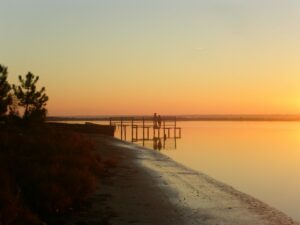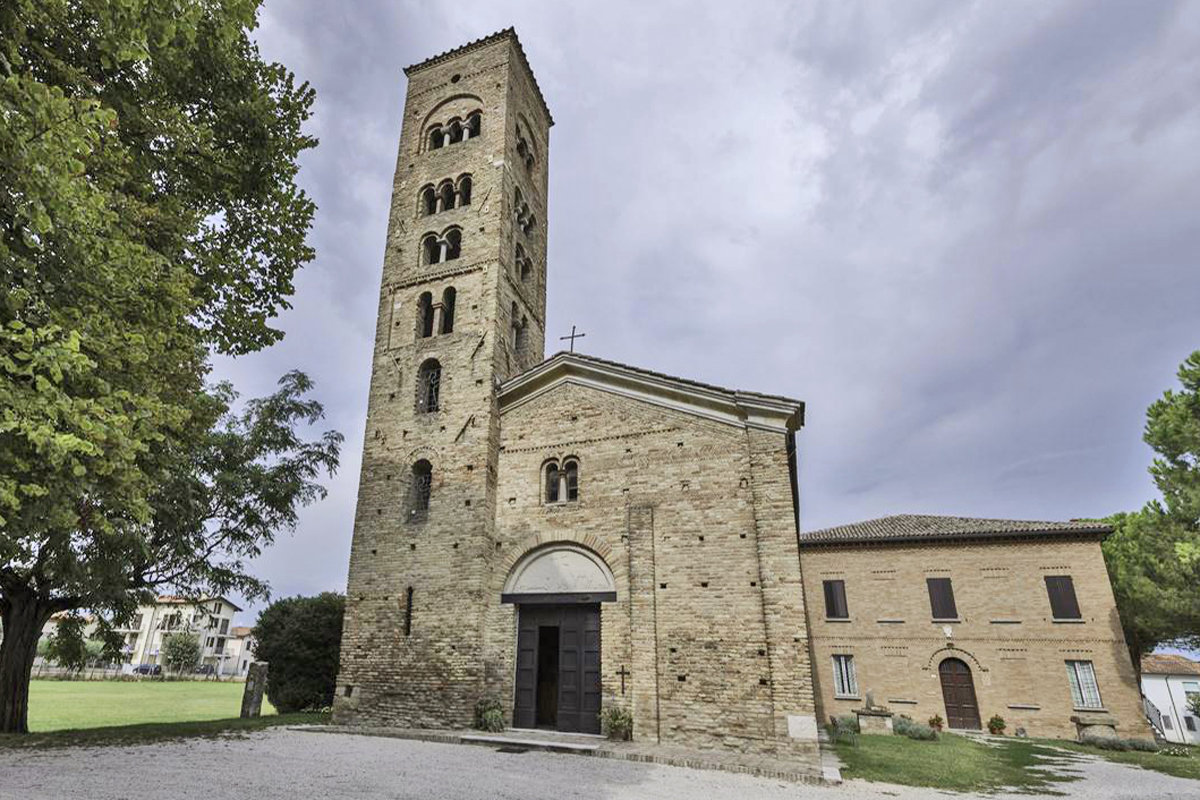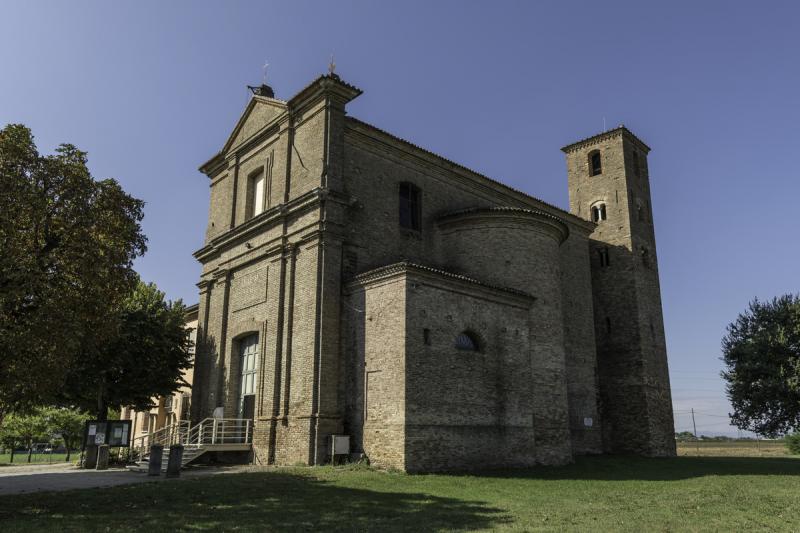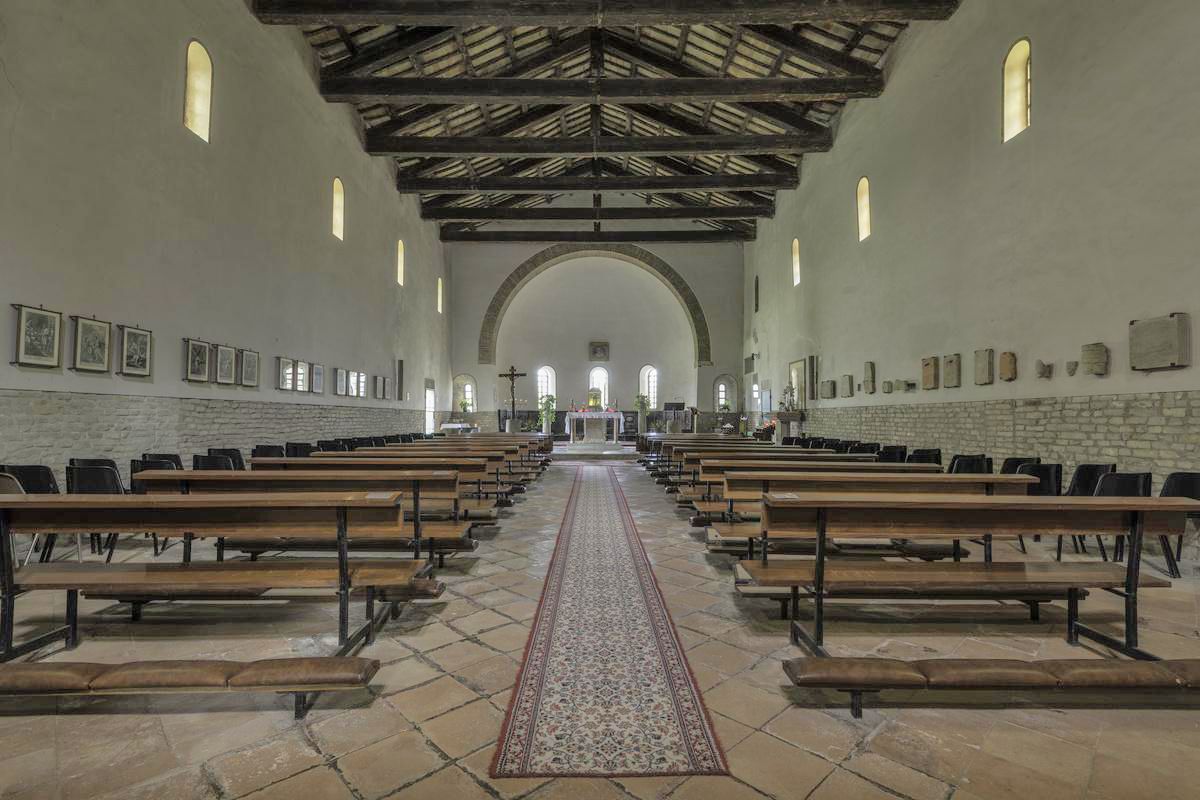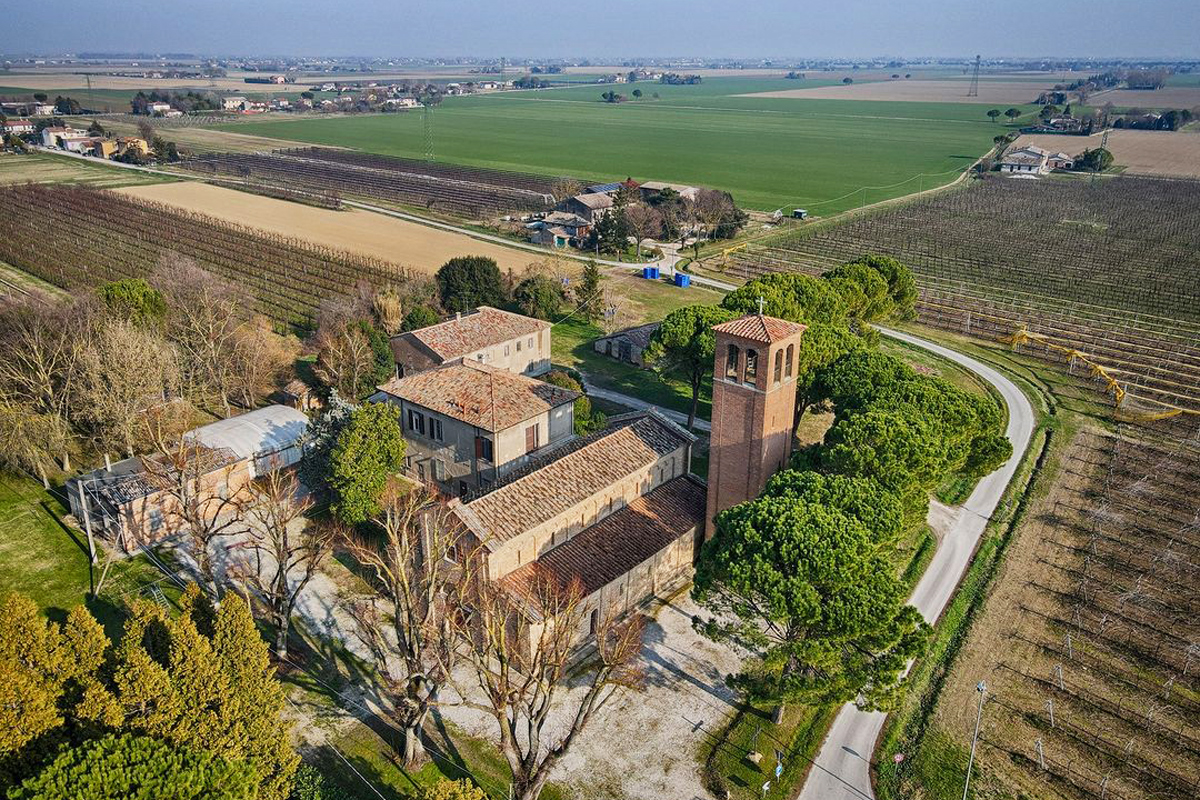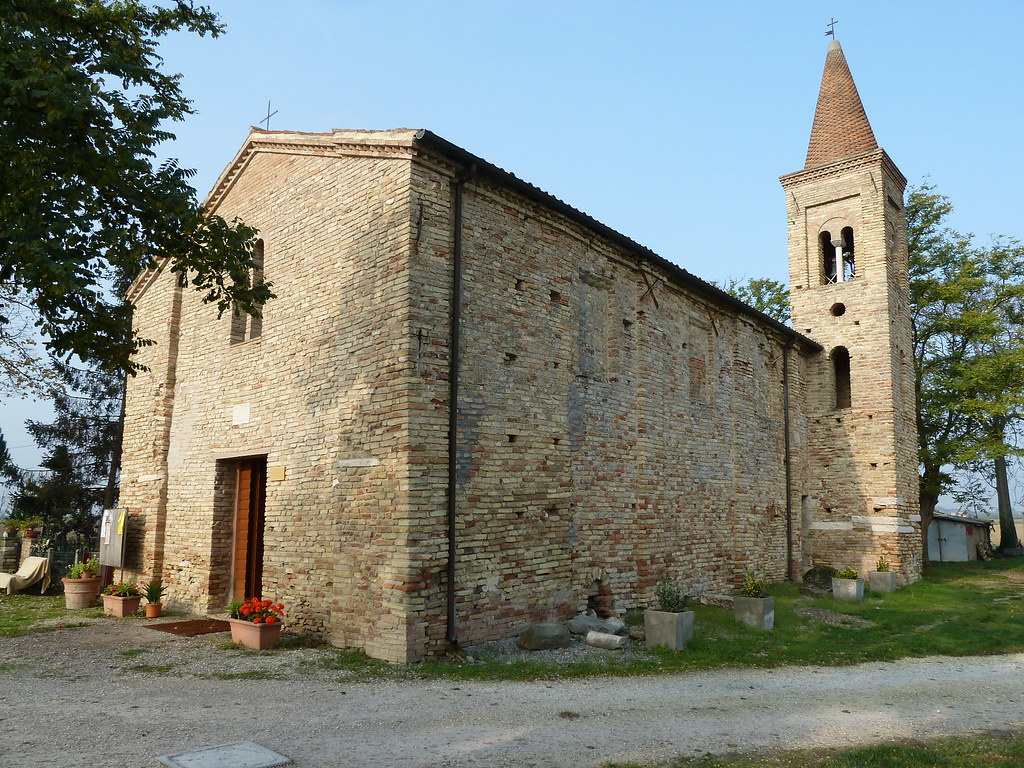A JOURNEY THROUGH HISTORY, ARCHITECTURE AND SACRED ART IN THE COUNTRYSIDE OF RAVENNA
Just south of Ravenna, in a triangle of territory that still shows clear signs of the ancient Roman centuriation, there are some very interesting and well-preserved parish churches.
Thanks in part to the intervention of Empress Galla Placidia, who lived in the 5th century and was a fervent devotee, dozens, perhaps hundreds, of these sacred buildings were in fact built, many of them from pre-existing pagan temples. By also endowing villages and towns with these shrines, the ruler intended to provide additional points of reference for the faithful to spread Christianity in the vast territories around the large cities.
With an itinerary of a few dozen kilometers through the Ravenna countryside, it is possible to discover these characteristic buildings, each of which holds an ancient secret.
THE PARISH CHURCH OF SAN BARTOLOMEO IN SAN ZACCARIA
Let us start from the parish church “farthest” from Ravenna, which is located about 18 kilometers to the south, along via Dismano, towards Cesena. Just outside the village of San Zaccaria we are greeted by the imposing 11th-century Romanesque bell tower, an intermediate symbol of the church’s various phases of expansion.
The present building was largely constructed in the late 1700s, while the original parish church was built between the 5th and 6th centuries on the remains of a late Roman villa, as we know from some documents dating from just before the year 1000. At the time, the building must have been at the center of a larger agglomeration, as archaeologists have uncovered some neighboring medieval buildings including a metal smelting furnace and a small cemetery.
This parish church, like many others in the “Decimano” area that ran up Romagna between the Ronco and Savio rivers, has an interior structure with three naves, supported by brick columns, with a semicircular apse in the background but pentagonal on the outside. A series of works, now disappeared but present until the entire 17th century, witnessed to the wealth and importance of this church for the entire area.
THE PARISH CHURCH OF SAN CASSIANO IN DECIMO IN CAMPIANO
Moving slightly northwards, one encounters the village of Campiano. Here is the splendid parish church of San Cassiano in Decimo, a name due to the town’s not accidental location at the 10th mile of the Roman centuriation that headed to what is now Forlimpopoli.
The saint Cassian from Imola, a teacher and martyr who lived in the 3rd century, although he never passed through these lands was also remarkably venerated in the area, as evidenced, for example, by the depictions in the mosaics of Sant’Apollinare Nuovo in Ravenna. It is therefore not surprising that some minor churches are dedicated to him, as in this case.
The parish church, mentioned since the year 896, is flanked by a very interesting Romanesque bell tower, embellished with polychrome Byzantine ceramics and a fragment of a statue known as “la Bartolla”, a partial pagan representation of the god Apollo. Inside, the single nave and semicircular apse house marble elements belonging to different periods, further evidence of the architectural stratification of this type of building.
THE PARISH CHURCH OF SAINTS PETER AND PAUL IN SAN PIETRO IN TRENTO
The parish church dedicated to Saints Peter and Paul is located in San Pietro in Trento, and is so called because it stands at the height of what was once the 30th mile of the decumanus that ran through the countryside in the northern part of the Forlì area.
Of this imposing church we have a mention in documents from the 10th century although, in all probability, its foundation dates back to the 5th century. It features many architectural elements typical of the parish churches located in the surrounding area: three-nave plan, essential interior, facade with exposed brickwork punctuated by pilasters, mullioned window lightening the entrance, simple interior and bell tower, which was, however, entirely rebuilt after the German bombings of World War II.
Peculiar, however, are the shape of its plan, a scalene rectangle, and especially the striking oratory-style crypt with cross vaults, located under the raised apse, recalling the Basilica of San Francesco in Ravenna. Inside, as in the inner part of the facade, it is possible to see fragments of frescoes dating back to the 15th century.
THE PARISH CHURCH OF SANT’APOLLINARE IN LONGANA
The last stop on this journey through history, architecture and sacred art is the parish church of Sant’Apollinare in Longana, just 5 kilometers away from Ravenna, along the road leading to Forlì. Some research has led to the hypothesis that this church stands on the site where the remains of Apollinare, the city’s first bishop and later martyr, were initially housed.
But the present building, dating from the 11th century, features another outstanding detail. The entrance to the main nave does not face west, as in all other churches, but east, where the apse is usually located.
Some excavations have led to the conclusion that this unusual orientation is the result of modifications carried out after the foundation of the church. These changes became necessary over the centuries due to changes in the water courses, which are very frequent in the Romagna plain.


